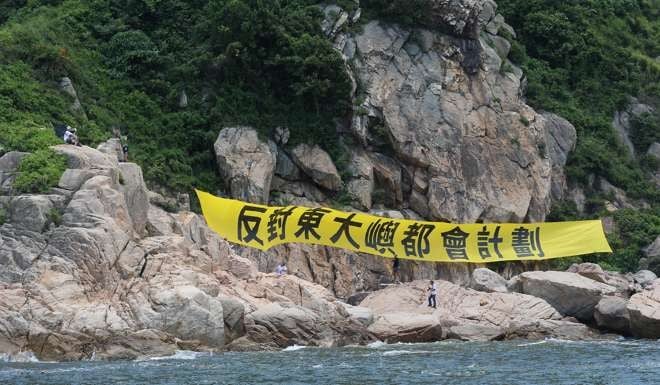
Hong Kong doesn’t need a vast new town rising from the seas off Lantau
Tom Yam says the government’s vision for the East Lantau Metropolis rests on flimsy rationale, amid a lack of political will to secure targeted land elsewhere from vested interests

Unless it is the Hong Kong government, using taxpayer money, to build what it calls the “East Lantau Metropolis”.

Hong Kong environmentalists unfurl protest banner on Kau Yi Chau against plan for ‘East Lantau Metropolis’
According to this “planning vision”, the East Lantau Metropolis will be created by reclaiming land around two islands east of Lantau and connecting them to Mui Wo in south Lantau. On these 1,000 hectares will rise housing for 400,000 to 700,000 people, and a business district, with essential infrastructure such as utilities, telecommunications, schools and clinics. Bridges or tunnels and railways totalling 29km will link this vast new town with the rest of Lantau, Hong Kong Island and Kowloon.

According to the government’s own figures on population and housing, this metropolis is bound to become the mother of all white elephants
Since then, four requests to conduct an analysis of the need for such a metropolis in the context of population growth and housing supply have been rejected.
The Development Bureau now claims the East Lantau Metropolis is justified by its recently announced Hong Kong 2030+ study. Curiously, the study began in 2015, a year after funding was requested for the metropolis.
Four requests to conduct an analysis of the need for such a metropolis in the context of population growth and housing supply have been rejected
The Hong Kong 2030+ study acknowledges that with the East Lantau Metropolis, Hong Kong will have the capacity for 9 million-plus residents, whereas the population will peak at 8.22 million. It disingenuously suggests the extra capacity will mean more space for everyone. As many as 700,000 residents on the metropolis’ 1,000 hectares means a population density of 70,000 per sq km – far denser than Hong Kong’s most congested district, Kwun Tong, which now has 57,250 residents per sq km. Even at the lowest estimate of 400,000 residents, the metropolis will be 2½ times more congested than Wan Chai’s 15,000 residents per sq km.
One million people living in a Lantau metropolis: does Hong Kong really want this?
The 2030+ study offers another flimsy rationale: the extra capacity allows flexibility in case of an unforeseen 10 per cent rise in population (despite forecasts in the past 15 years predicting a declining trend).
That means the East Lantau Metropolis will be the costliest contingency plan in the world: hundreds of billions spent to provide for an unlikely 10 per cent increase in population. A smarter contingency plan would be to add capacity incrementally around planned development areas in the northern New Territories.

Tom Yam is a Hong Kong-based management consultant. He holds a doctorate in electrical engineering and an MBA from the Wharton School of the University of Pennsylvania

